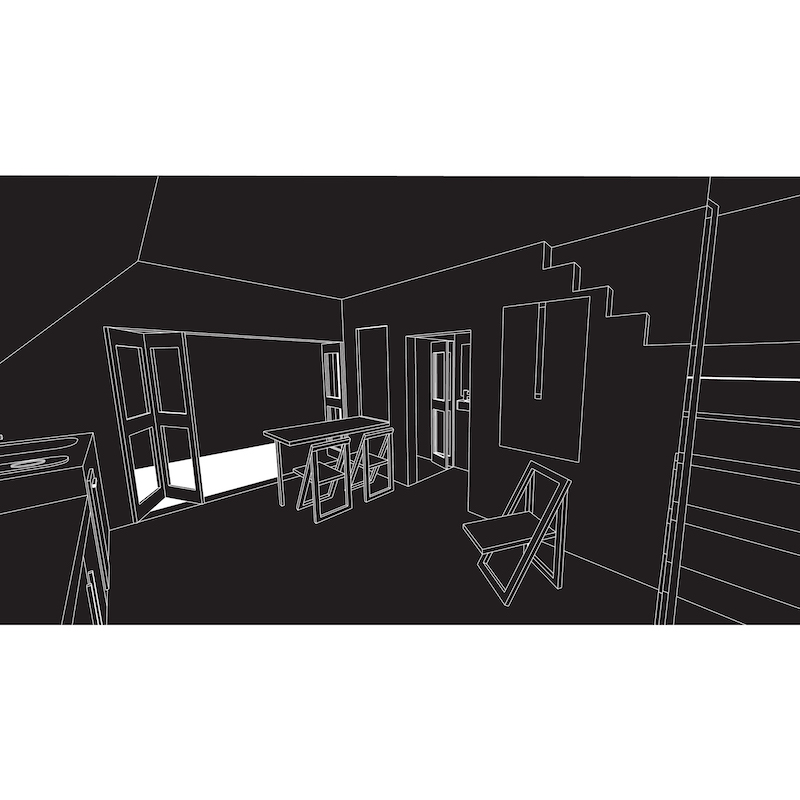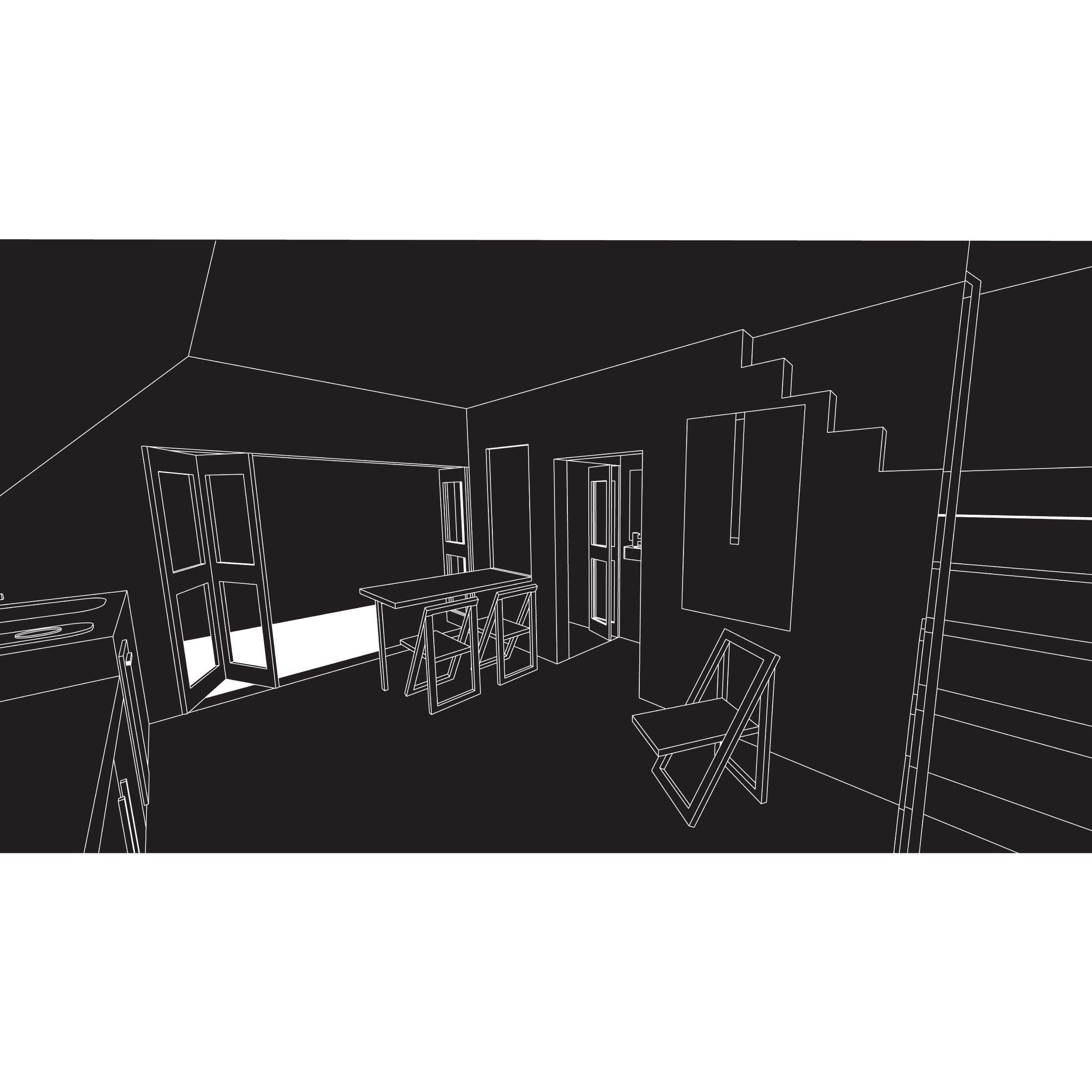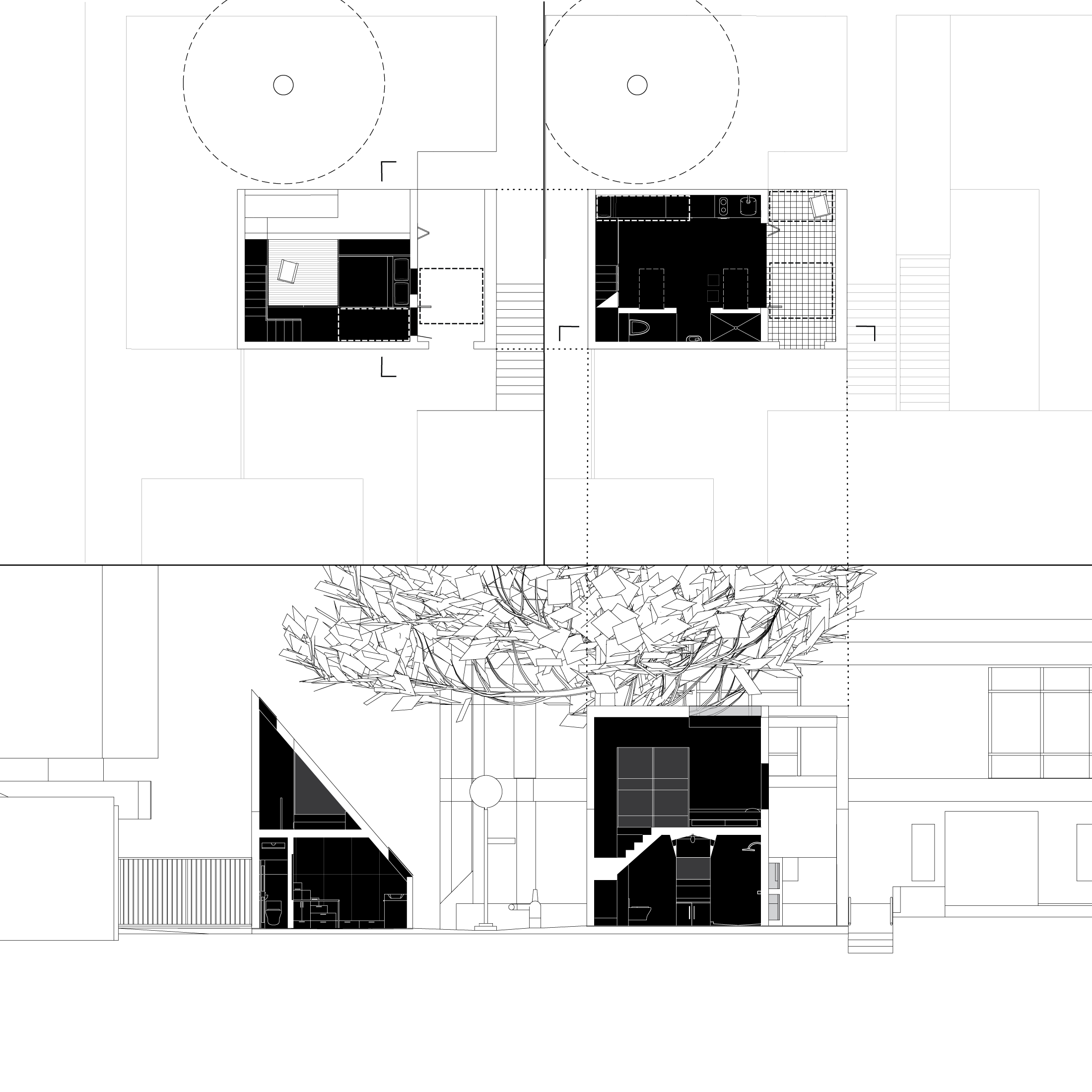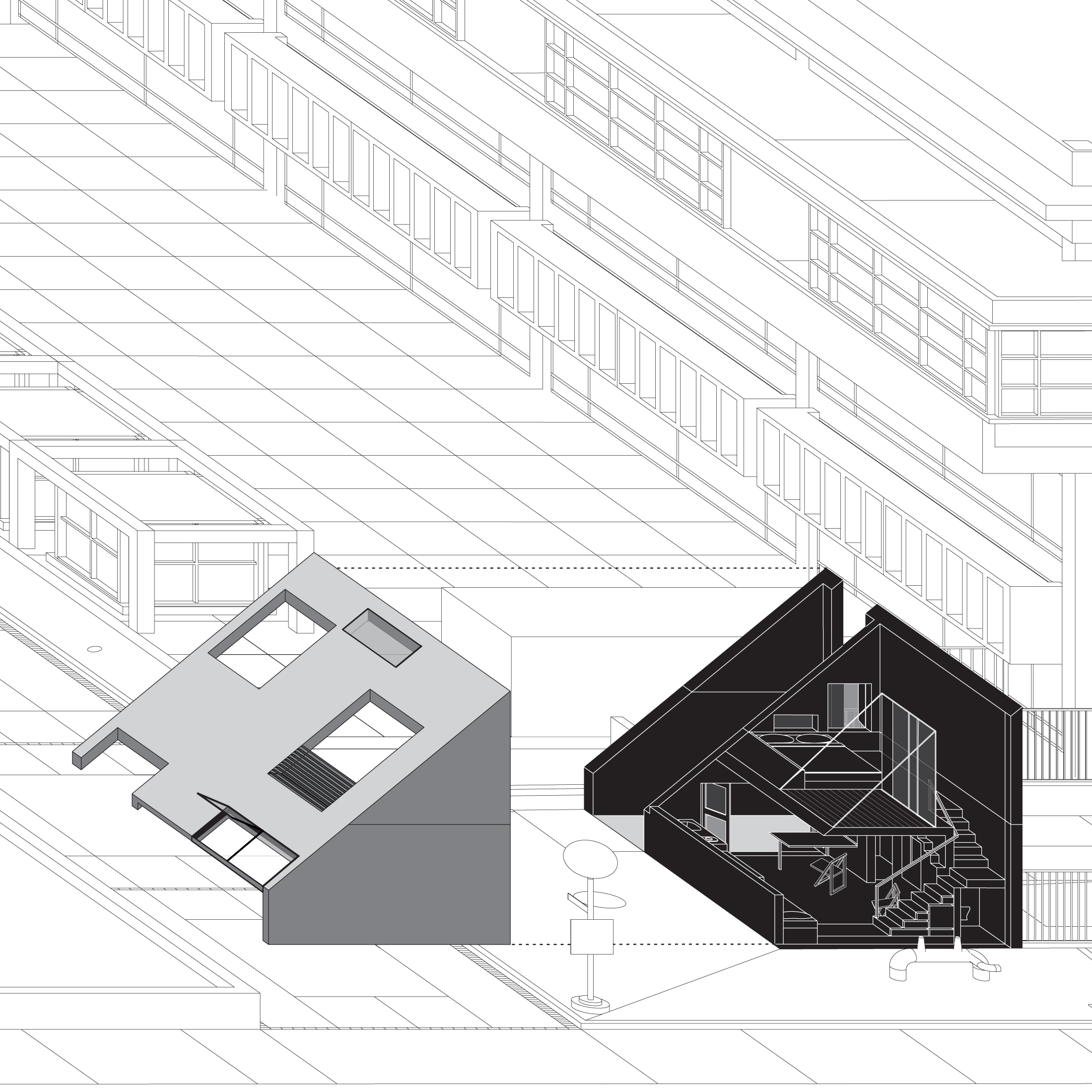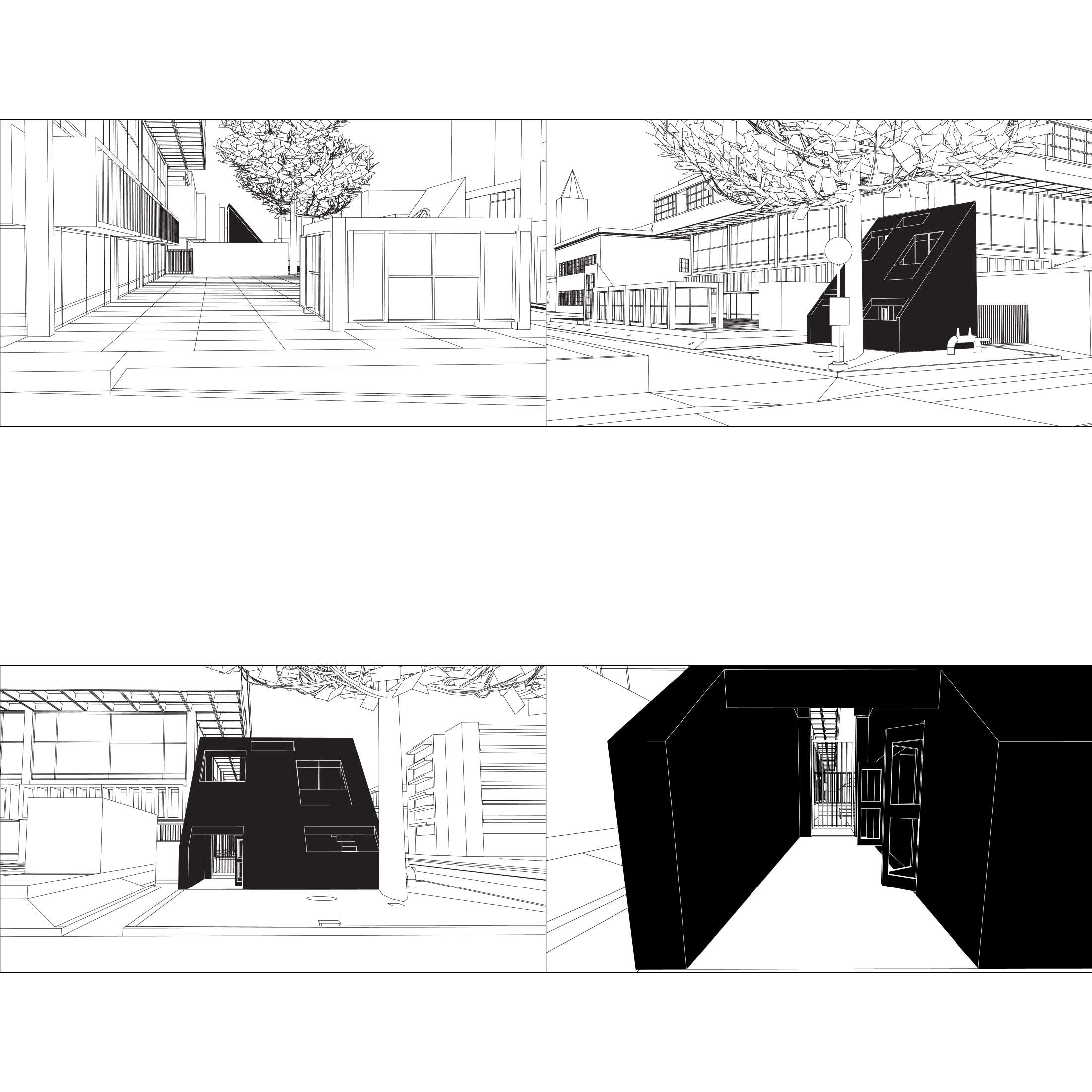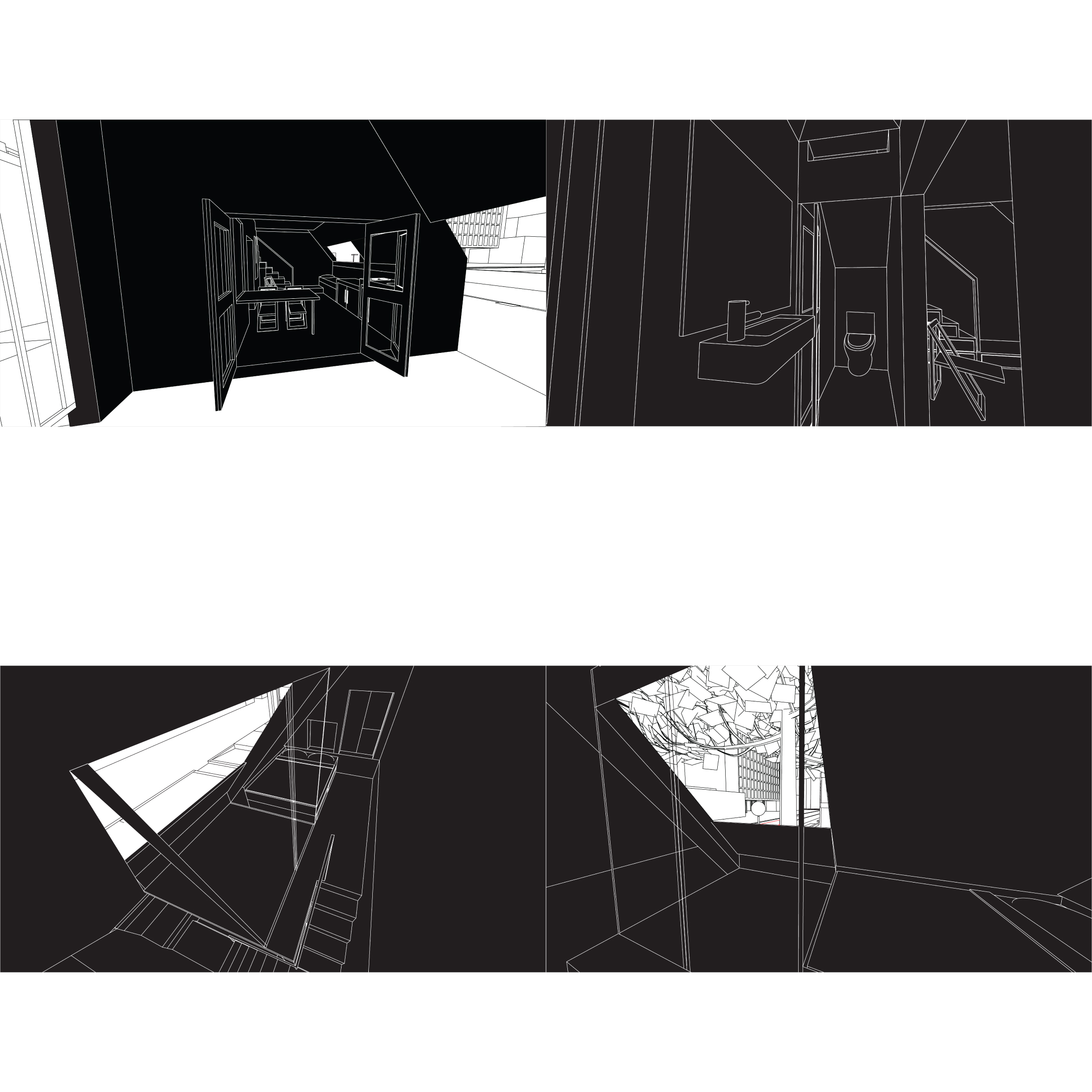Habitué
Tasked with designing an on-campus micro dwelling for visiting lecturers, the project examines Robert Venturi’s principle of Double Functioning Elements, and more specifically the observation that “valid ambiguity promotes useful flexibility.” Beginning with a simple primitive that echoes the form of the neighboring skylight on the roof of the Helen Topping Architecture Library—a prism or wedge—spatial ambiguity becomes the strategy to make a dwelling that is functionally flexible, and open as well as enclosed.
In order to achieve this, a set of double-functioning elements work to optimize the use of the limited square footage by allowing users to determine how the space is used. Service functions such as the kitchenette and bathroom are pushed to the periphery of the space while a sleeping loft and recessed porch in the north-facing façade connects the interior to the exterior, providing a clear view of the Canary Island Pine tree that dominates the small site. Various furniture elements such as daybeds, tables, and chairs are built-in or easily stored, and can be reconfigured to do more than one thing.
Ultimately, Habitué is both small and large—a guest house or haven that evokes images of domestic icons such as A-frame cabins and lofts, in the midst of the USC campus.
